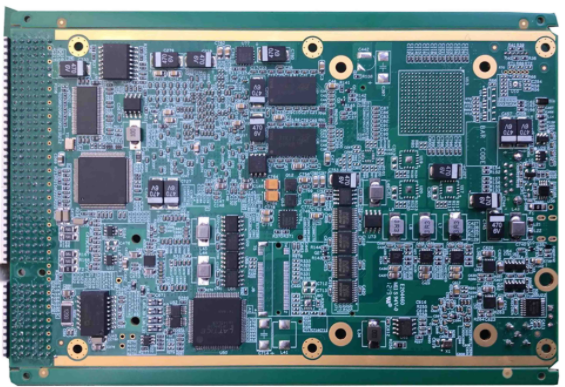Impedance matching of circuit board
Impedance matching Impedance matching refers to an appropriate matching method between the signal source or transmission line and the load. According to the access mode, there are two ways of impedance matching: serial and parallel; according to the frequency of the signal source, impedance matching can be divided into two types: low frequency and high frequency.
High-frequency signals generally use serial impedance matching. The resistance value of the series resistor is 20~75Ω, and the resistance value is proportional to the signal frequency and inversely proportional to the PCB trace width. In embedded systems, serial matching resistors are usually added for signals with frequencies greater than 20M and PCB trace lengths greater than 5cm, such as clock signals, data and address bus signals in the system. There are two functions of series matching resistance:

1.1. Reduce high frequency noise and edge overshoot. If the edge of a signal is very steep, it contains a lot of high-frequency components, which will radiate interference. In addition, it is also prone to overshoot. The series resistance and the distributed capacitance of the signal line and the load input capacitance form an RC circuit, which will reduce the steepness of the signal edge.
1.2. Reduce high frequency reflection and self-excited oscillation. When the frequency of the signal is high, the wavelength of the signal is very short. When the wavelength is as short as the length of the transmission line, the reflected signal superimposed on the original signal will change the shape of the original signal. If the characteristic impedance of the transmission line is not equal to the load impedance (that is, does not match), reflections will occur at the load end, causing self-oscillation. The low-frequency signal of the wiring in the PCB board can be directly connected, and it is generally not necessary to add a series matching resistor.
2. Parallel impedance matching is also called "terminal impedance matching", which is generally used at the input/output interface, and mainly refers to the impedance matching with the transmission cable. For example, LVDS and RS422/485 use Category 5 twisted-pair cables with input end matching resistance of 100~120Ω; video signals use coaxial cables with a matching resistance of 75Ω or 50Ω, and use flat cables with a matching resistance of 300Ω. The resistance value of the parallel matching resistor is related to the medium of the transmission cable and has nothing to do with the length. Its main function is to prevent signal reflection and reduce self-excited oscillation.
It is worth mentioning that impedance matching can improve the EMI performance of the system. In addition, in addition to using series/parallel resistors to solve impedance matching, transformers can also be used for impedance transformation. Typical examples are Ethernet interfaces and CAN buses.
ipcb is a high-precision, high-quality PCB manufacturer, such as: isola 370hr PCB, high-frequency PCB, high-speed PCB, ic substrate, ic test board, impedance PCB, HDI PCB, Rigid-Flex PCB,buried blind PCB, advanced PCB, microwave PCB, telfon PCB and other ipcb are good at PCB manufacturing.